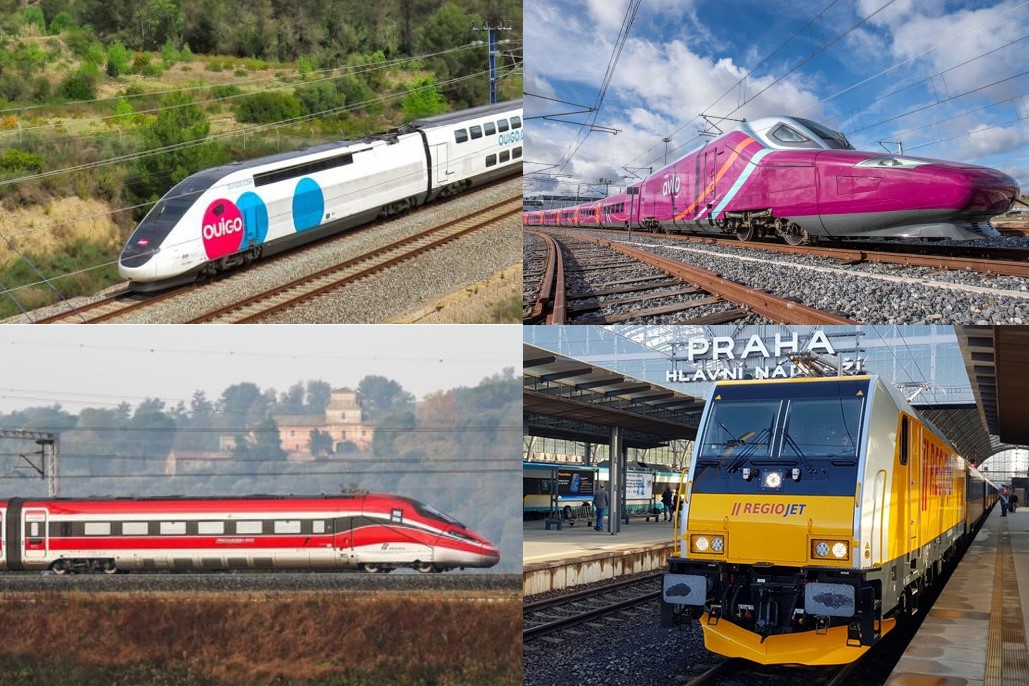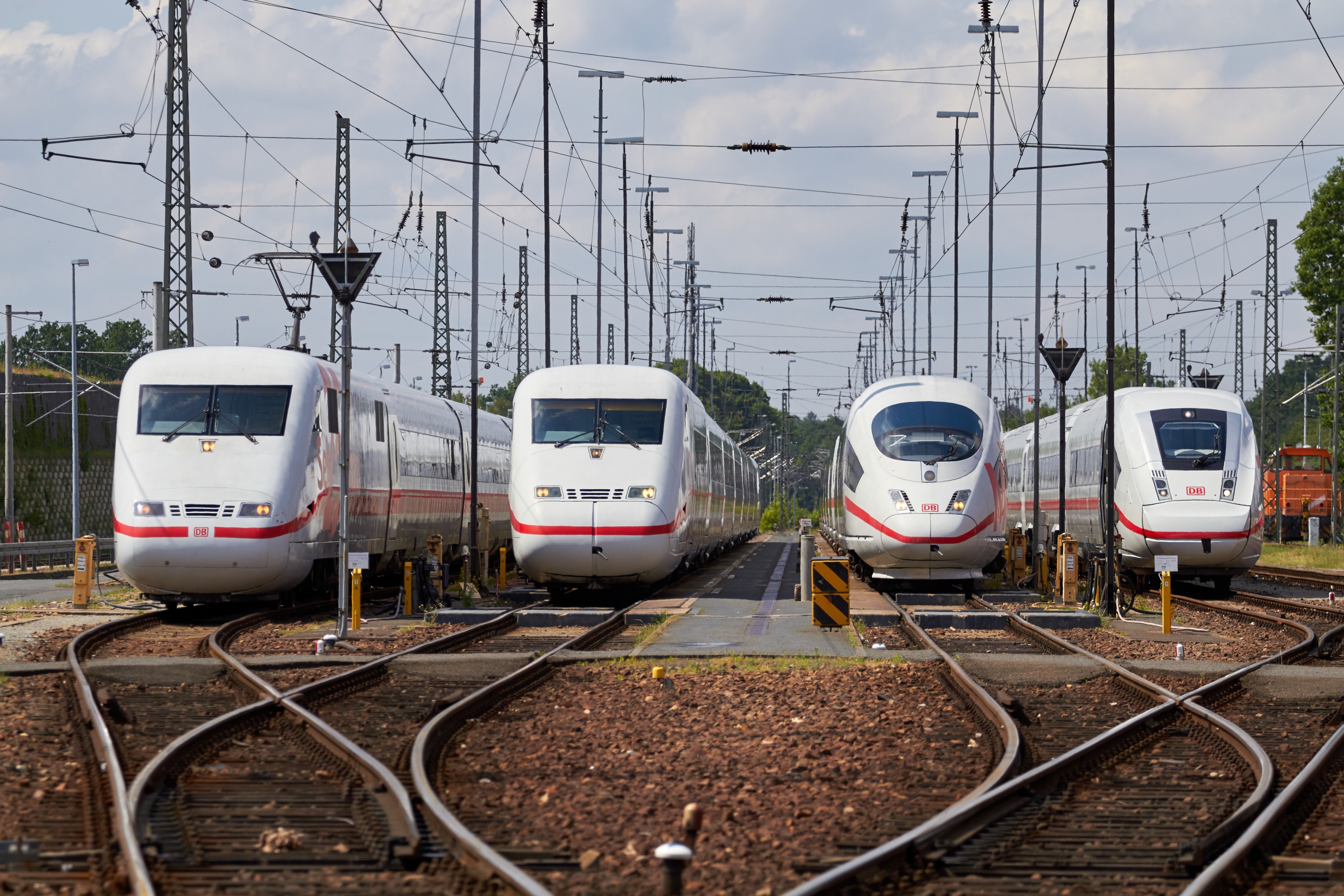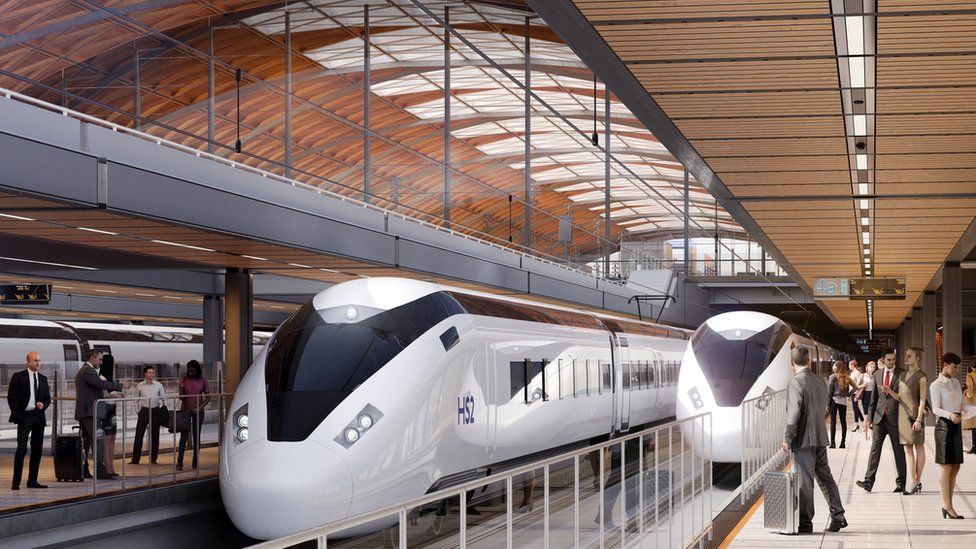By Frédéric de Kemmeter – Railway signalling and freelance copywriter – Suscribe my blog
12/12/2021 – (Version en français)
🟧 Back to homepage 🟧 See our brief news
Standardisation, volume and competition from aviation. This is the main focus of the long distance policy of the railway companies. To achieve this, they have relied on high speed, forgetting a little about the added value of the classic Intercity train.
Of course one country is not the other. There is nothing in common between a relatively deserted Spain and the geographical network of English or German cities. Nor does it have anything in common with the rugged terrain of Central Europe, a region where high-speed rail is rather rare. Italy and Sweden are countries of great length.
Similarly, in terms of attractiveness, there is nothing comparable between Paris, Madrid or London, which are cities very centralised and Berlin, Vienna, Stockholm or Rome, which are a little more eccentric in their own countries. Vienna is trying to make up for this handicap by declaring itself to be the « hub of Central Europe ».
Finally, a number of countries have ‘global’ cities competing with their own capital: Milan against Rome, Barcelona against Madrid, Munich against Berlin and to some extent Manchester against London. And in France? There is no global rival to Paris. All these elements obviously form the basis of the mainline policy of the railway companies.
These large countries, whose major cities are several hundred kilometres apart, have installed a domestic air network, sometimes extensive, to link them together or to their capital. All these airlines were in the hands of national governments.
For several decades, the successive authorities of these countries believed that the train was only a matter for a few major routes, blinded by the very American conviction that the air and the car were the future of passenger transport.
The answer to this competition came in the form of high-speed rail. It should be noted that this migration to high speed did not always have the support of the governments of the 1970s, which were very sceptical about the capacities of rail to make technological progress.
High-speed trains on dedicated lines appeared in the 1980s and 1990s, mainly in France, Germany, Italy and Spain. The UK has been left out of this movement, except for the short line HS1 linking London to the Channel Tunnel.
High speed becomes a star
Some networks believed that high speed would be sufficient on its own and disinvested in the large classic expresses, which had become obsolete. In addition, the 1990s and 2000s coincided with a vast restructuring of the railway industry, which had previously been a subcontractor of state companies. This industry, faced with the high-speed craze, stopped producing the classic 26.40m UIC passenger car, with its 80 seats in second class and 54 in first class. This was a tragedy for the small operators who, in order to start up, had to make do with buying up the old UIC railway cars.
The good old intercity train that winds along at 140 or 160km/h is now sold as multiple units trainsets, such as Stadler KISS trains, CAF Oaris or Hitachi Rail IEP trains. However, some companies such as Astra, CAF or Siemens-Austria still produce cars, such as the Astra cars bought by Regiojet, the CAF cars for the Caledonian Sleeper and of course the Siemens cars for the ÖBB (Railjet and Nightjet).
The rolling stock problem
But for new operators, buying new vehicles can be expensive. It can also be seen that only the German-speaking countries have had the political conditions to create a second-hand market, which makes RDC, Flixtrain, Regiojet and a lot of other owners happy. A whole ecosystem of specialised workshops has emerged to respond to initiatives of the newcomers. In other countries, the sale of vehicles from public enterprises is prohibited. Two political cultures in one Europe, difficult to speak of a Europe of railways under these conditions…
The Intercity train, however, has its place alongside high speed. An advantage for some of the major networks is not to differentiate between conventional and high-speed trains in terms of marketing. Italy’s Trenitalia has grouped its long-distance services under the name « Frecce » (Arrow), in three distinctive colours. Deutsche Bahn also groups its trains under the name « Intercity », with no real distinction between high-speed ICE and conventional Intercity. This policy is less clear in Spain and France. SNCF is trying to group all its low-cost Ouigo trains together, but retaining the distinction between TGV and « classic speed ».
The Austrians have shown the way with their Railjets, which replace the old term « Intercity » and « Eurocity », but it should be remembered that Austria, like its eastern neighbours, will never have a high-speed network like Spain or France.
The Intercity train is also the one that connects medium-sized cities to large ones, or cities away from the major flows. There are no longer any Brussels-Strasbourg-Basel or Lille-Luxembourg connections, and the major cross-country routes are often reduced to the level of local traffic. The French cooperative Railcoop wants to try to get these cross-country lines back into service.
In Great Britain, the high-speed line between Birmingham and Leeds was recently cancelled in this deprived region. A broader political project called « Northern Power House » is attempting to re-establish better coordinated intercity links between the core cities of Hull, Manchester, Liverpool, Leeds, Sheffield and Newcastle.
Intercity services in Europe are available in fairly similar forms. Its assets are the systematisation of timetables and rolling stock. Their niche is in long-distance relations, whether or not they are high-speed or partially on high speed lines. The marketing of these trains is part of a coherent package, as in Austria or Italy, where the ‘Intercity’ product is included in a complete tariff package without being relegated as « a thing apart ».
Intercity is not a secondary train to new products, it is inserted into the marketing of all long-distance transport. It can generate income and add value to the fine service of the territory, without transforming these « expresses » into local trains, as some elected officials in the depths of their provinces want…

12/12/2021 – By Frédéric de Kemmeter – Railway signalling and freelance copywriter
Suscribe my blog
Related topics:
 What’s new about long distance operators?
What’s new about long distance operators?
22/08/2021 – There is a lot of movement among the long-distance operators in Europe. This is an opportunity for a brief summary as we enter the last quarter of 2021, featured Trenitalia, Ouigo Espana, REgioJet and Renfe. xxxxxxxxxxxxxxxxxxxxxxxxxxxxx xxxxx xxxxxxxxxx xxxxxxxxxx xxxxxxxxxxx
 Happy birthday, InterCity Express
Happy birthday, InterCity Express
30/05/2021 – 10 years after the launch of the first high-speed train in France, Germany launched its own high-speed train called « InterCity Express » (ICE). This is an opportunity to look back at the German concept, which differs from the French options. The arrival of the ICE has allowed Deutsche Bahn – and Siemens -, to become one of the world’s leading high-speed railways.
 Great-Britain: scaled back plan for HS2 network project
Great-Britain: scaled back plan for HS2 network project
21/11/2021 – The UK’s high-speed network project HS2 is undergoing a major slimming down in the part towards the Midlands. The authorities intend to shift the focus of rail policy to local and regional transport in this region. But with what money?
 Moving from product to customer: can rail learn from Gafam?
Moving from product to customer: can rail learn from Gafam?
20/06/2021 – Moving from a « product » policy to a « customer » policy is a real challenge for rail. The weight of assets (trains-infrastructure) and cultural habits still largely shape rail policy, but there are, however, some reasons for hope.


Vous devez être connecté pour poster un commentaire.